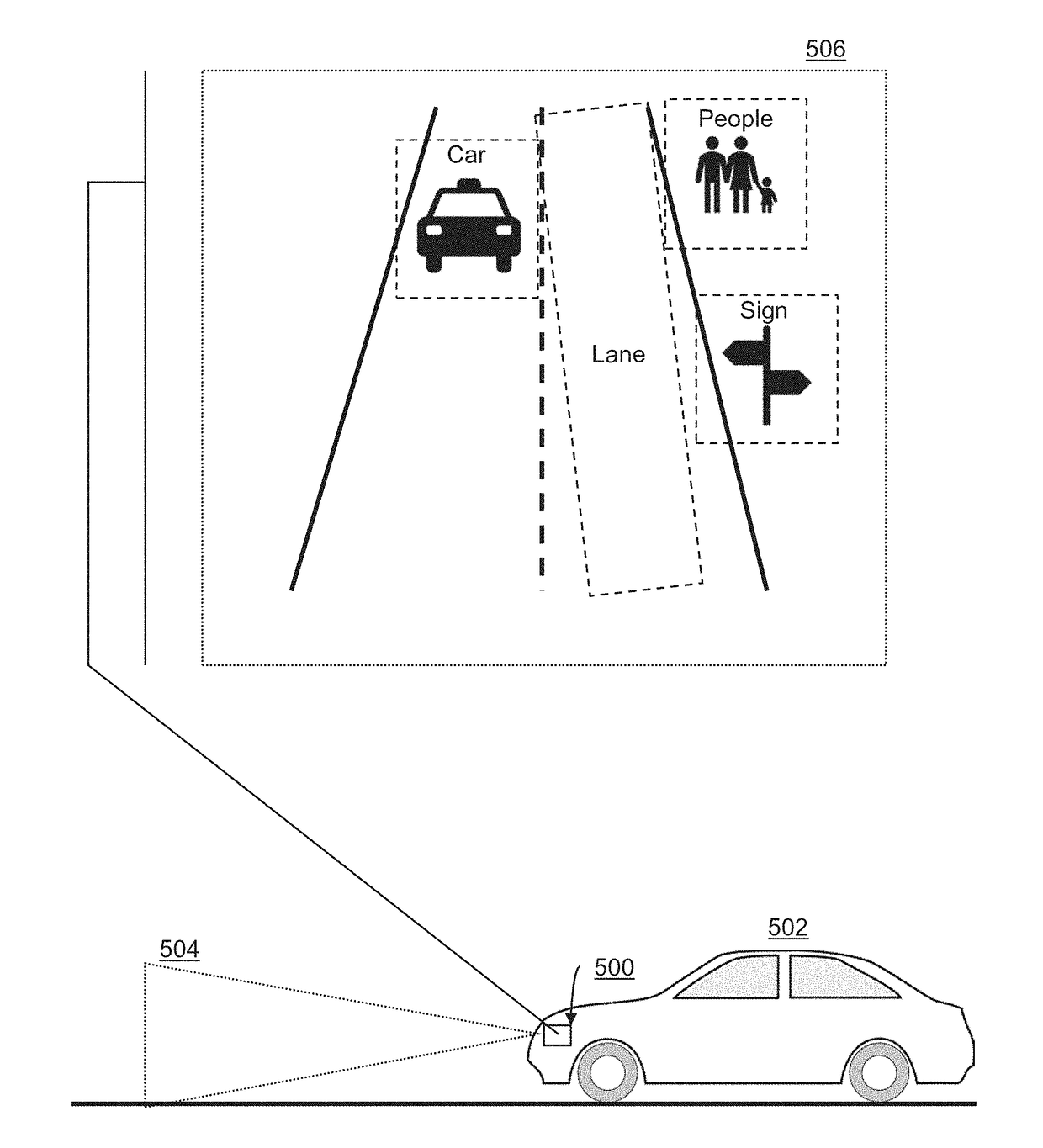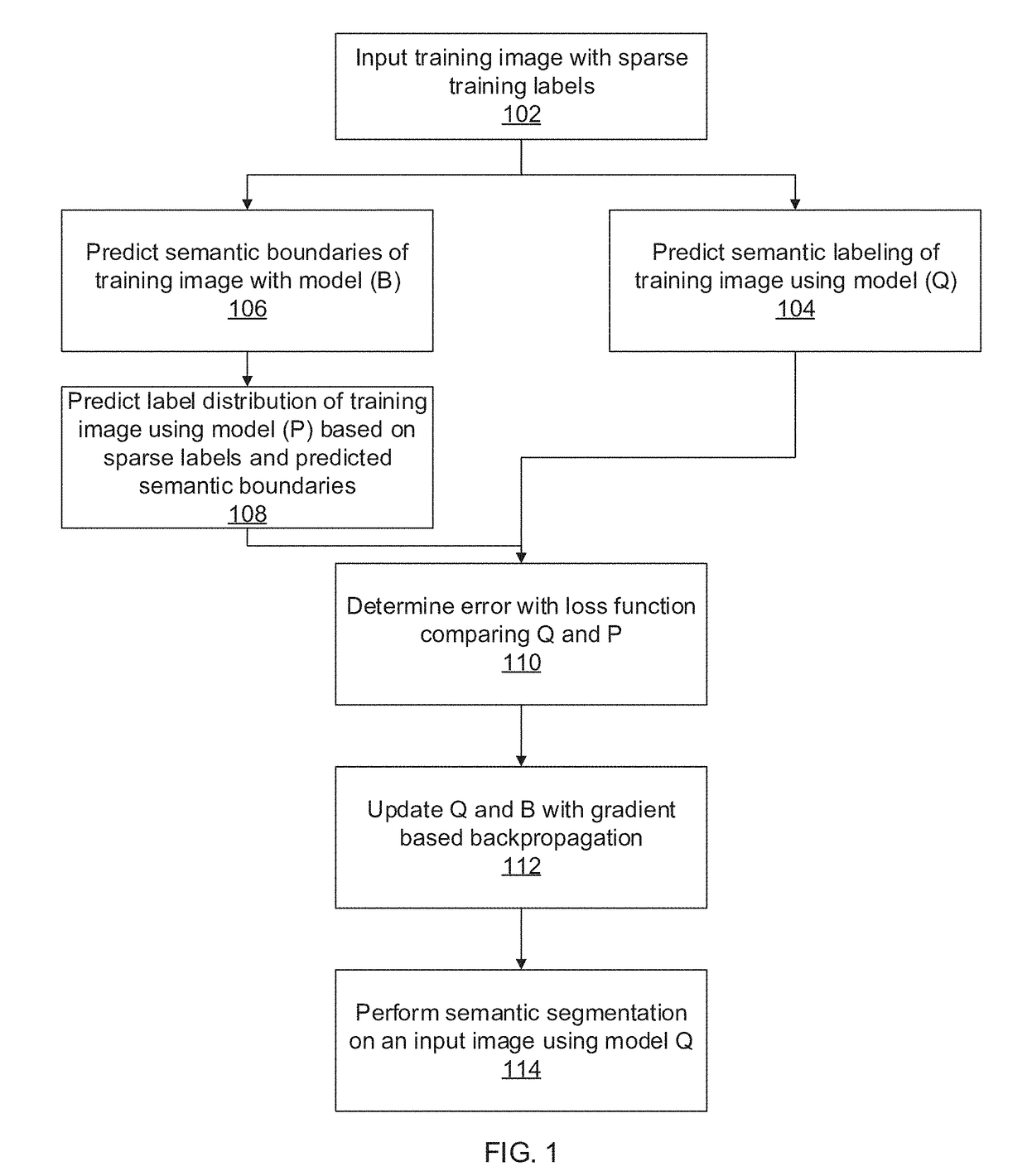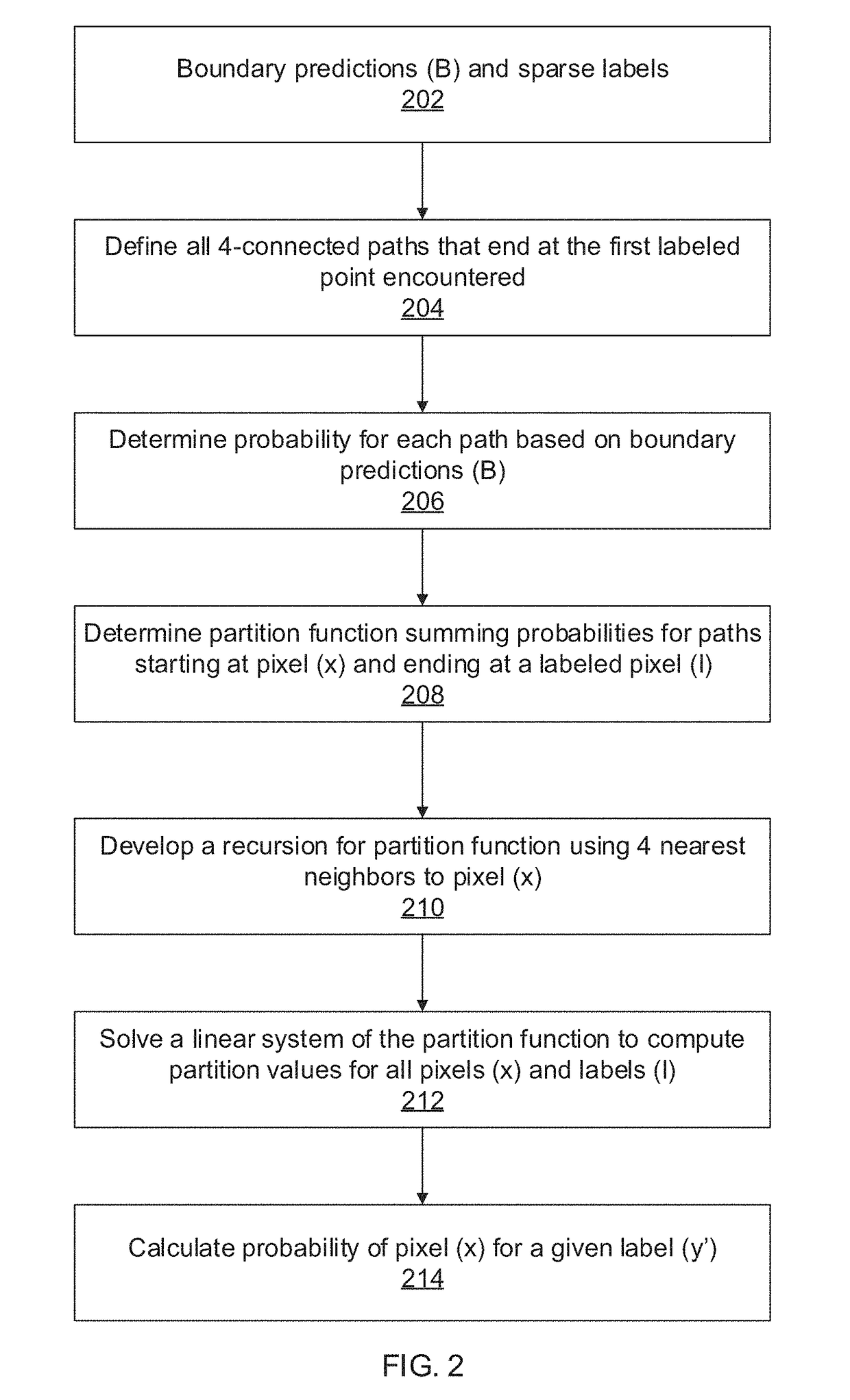System and Method for Learning Random-Walk Label Propagation for Weakly-Supervised Semantic Segmentation
a random-walk label and propagation method technology, applied in the field of semantic segmentation of images, can solve the problems of large dataset cost, high cost of training, previous methods, etc., and achieve the effect of accurately and efficiently generating a learned semantic segmentation model
- Summary
- Abstract
- Description
- Claims
- Application Information
AI Technical Summary
Benefits of technology
Problems solved by technology
Method used
Image
Examples
Embodiment Construction
[0015]In accordance with the present principles, systems and methods are provided for learning random-walk label propagation for weakly-supervised semantic segmentation. In one embodiment, a sparsely annotated training set is employed to train a neural network, such as, e.g. a convolutional neural network (CNN), by jointly training a boundary predictor and a semantic segmentation predictor, while retaining the benefits of using an expensive densely annotated dataset.
[0016]A training image from a dataset may have sparse annotations including object labels (ground-truth labels) at a subset of pixels within the image. A semantic labeling model may then use a CNN of an arbitrary type to predict the semantic segmentation from the image alone. Concurrently, a boundary predictor, which may include a separate CNN, may be used to predict object boundaries from the image alone. A label propagator may then infer labels for each pixel in the image using the ground-truth labels and the location ...
PUM
 Login to View More
Login to View More Abstract
Description
Claims
Application Information
 Login to View More
Login to View More - R&D
- Intellectual Property
- Life Sciences
- Materials
- Tech Scout
- Unparalleled Data Quality
- Higher Quality Content
- 60% Fewer Hallucinations
Browse by: Latest US Patents, China's latest patents, Technical Efficacy Thesaurus, Application Domain, Technology Topic, Popular Technical Reports.
© 2025 PatSnap. All rights reserved.Legal|Privacy policy|Modern Slavery Act Transparency Statement|Sitemap|About US| Contact US: help@patsnap.com



